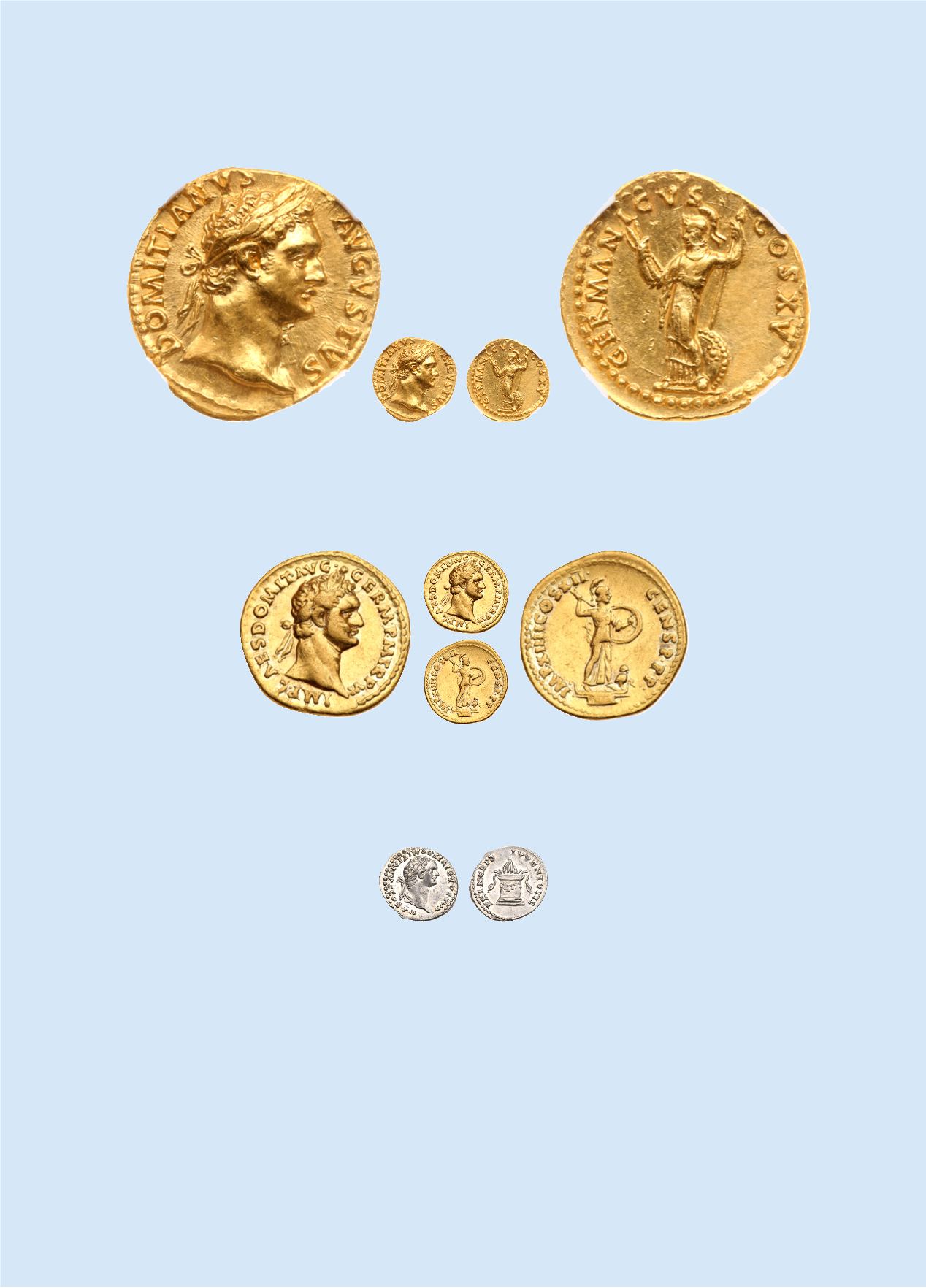

Impressive Gold Aureus of Domitian
1219
Domitian. Gold Aureus (7.46 g), AD 81-96. Rome, AD 90/1. DOMITIANVS AVGVSTVS, laureate head
of Domitian right. Rev. GERMANICVS COS XV, Minerva standing facing, head left, holding thunderbolt
and spear; at her feet behind, small round shield. (RIC 697; BN 161; BMC 171; Calicó 841).
NGC grade Ch
AU; Strike: 5/5, Surface: 2/5. Fine style.
$ 15,000
1220
Domitian. Gold Aureus (7.27 g), AD 81-96. Rome, AD 86. IMP CAES DOMIT AVG GERM P M TR
P VI, laureate head of Domitian right. Rev. IMP XIIII COS XII CENS P P P, Minerva standing right on
capital of rostral column, holding spear and shield; at her feet to right, owl. (RIC 455; BN 102; BMC 98;
Calicó -). Well struck and perfectly centered with underlying luster present. Choice very fine.
$ 6,000
1221
Domitian. Silver Denarius (3.45 g), as Caesar, AD 69-81. Rome, under Titus, AD 80. CAESAR DIVI F
DOMITIANVS COS VII, laureate head of Domitian right. Rev. PRINCEPS IVVENTVTIS, lighted altar
hung with garlands. (RIC 50; BN 76-7; BMC 92-6; RSC 397a). An excellent example. Lustrous. Superb
Extremely fine.
$ 750
This coin, struck in the name of Domitian during the reign of his elder brother Titus as emperor, although meant to show his
designation as successor in one significant respect highlights his relative political insignificance. While Titus and Vespasian enjoyed
military glory and the adoration of the Roman public thanks to their roles in successfully ending the chaotic Year of the Four
Emperors (AD 68/9) and their victorious suppression of the bloody Jewish Revolt (AD 66-73), Domitian was essentially a Flavian
nobody who could not directly claim much of a share in these great triumphs. Thus, his titlature on this coin is largely ceremonial
rather than imbued with power. Here he is Caesar and Princeps Iuventitis (“Prince of the Youth”), which designates him as the
intended successor to Titus but does not give him any imperium (the power to command).



















